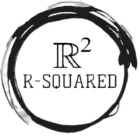Memory-Based Questions from CSIR NET Mathematical Science Exam (July 25, 2024)
Part C
Q.1 The function \(x|x|\) is/are?
Q.2 Consider the function \(f(x, y)=\left\{\begin{array}{cl}\frac{y \sqrt{x^2+y^2}}{x} & ,(x, y) \neq(0,0) \\ 0 & ,(x, y)=(0,0)\end{array}\right.\)
Q.3 Consider the quadratic form \(f(x, y, z)\) for which \(\exists(a, b, c) \neq(0,0,0)\) such that \(f(a, b, c)=0\)
Q.4 If \(\sum a_n\) is a convergent series and \(b_n= \begin{cases}a_n, & a_n>0 \\ 0, & a_n<0\end{cases}\) then which of the following is/are correct? and \(c_n=\left\{\begin{array}{cc}a_n, & a_n<0 \\ 0, & a_n>0\end{array}\right.\)
Q.5 If \(f(z)\) is an entire function and \(|f(z)| \geqslant 2024\) then
Q.6 If \(f(z)\) is an entire function then its power series \(\sum a_n z^2\) is
Q.7 If \(A\) is a \(4 \times 4\) matrix with real entries where the minimal polynomial is \(x^2+x+1\) and \(B=A+I_4\) for a given \(4 \times 4\) identity matrix, then which of the following are true?
Q.8 If \(f(z)=\frac{1}{z} \sin \left(\frac{1}{z}\right)\) and \(g(z)=f(z) \cdot \sin z\), then which of the following are/ is true?
Part B
Q.9 If \(C\) is the collection of del sets \(S\) such that the power set of those is countably infinite, then the cardinality of \(C\) is
Q.10 If \(f_n(x)=\frac{x^2}{\sqrt{x^2+\frac{1}{n}}}\) then
Q.11 Let \(T\) be a linear transformation of all \(2 \times 2\) matrices given by \(T(B)=A B\) and \(A=[2, 0; 0, 1]\), then the characteristic polynomial of \(T\) is:
Q.12 The number of solutions of the equation \(e^x + x = 1\) is
Q.13 The supremum of the set \(\{x: 0 < (\sqrt{2}-1)x < \sqrt{2}+1\}\) is
Q.14 Let \(A=\left[\begin{array}{ll}2 & b \\ a & c\end{array}\right]\) be a given matrix such that ‘6’ is one eigenvalue then which of the following is necessarily true?
Q.15 If \(A\) is a \(10 \times 10\) real matrix such that \(\operatorname{rank}(A)=7\), then which of the following options can be true?
Q.16 The possible orders of an element in the symmetric group \(S_5\) are
Q.17 The number of group homomorphisms from \(\mathbb{Z_{150}}\) to \(\mathbb{Z_{90}}\) is
Q.18 If \(f: \mathbb{R} \rightarrow \mathbb{R}\) is a continuous one-to-one function, then
Analysis and Insights
These memory-based questions provide a glimpse into the types of problems encountered in the CSIR NET Mathematical Science exam. By reviewing these questions, you can gain valuable insights into the exam pattern and focus on areas that may require more attention.
Practice these questions and review your solutions to build a stronger foundation and improve your problem-solving skills. For more detailed solutions and explanations, consider consulting additional study materials or contacting experts in the field.

1. A,B
2. A, B